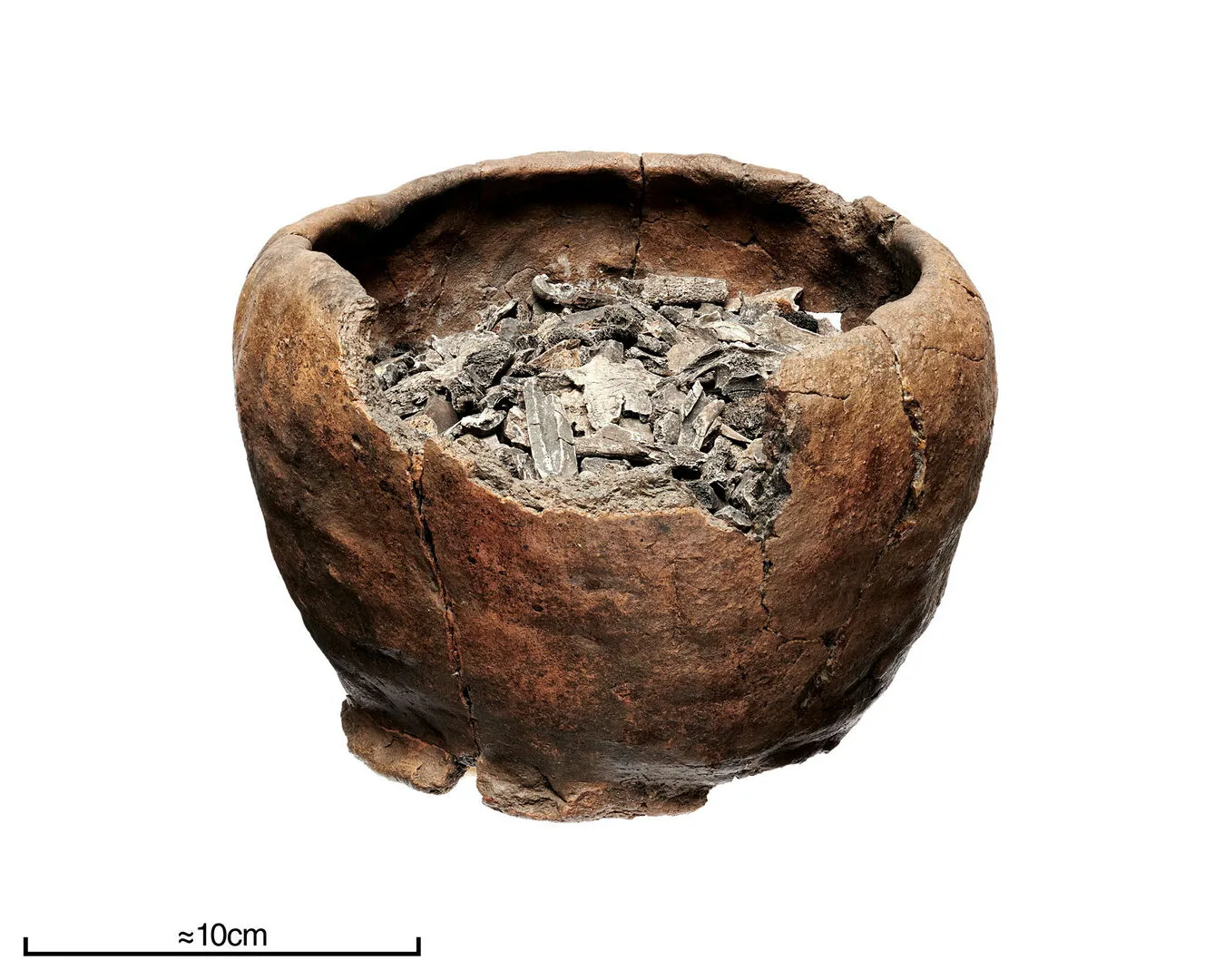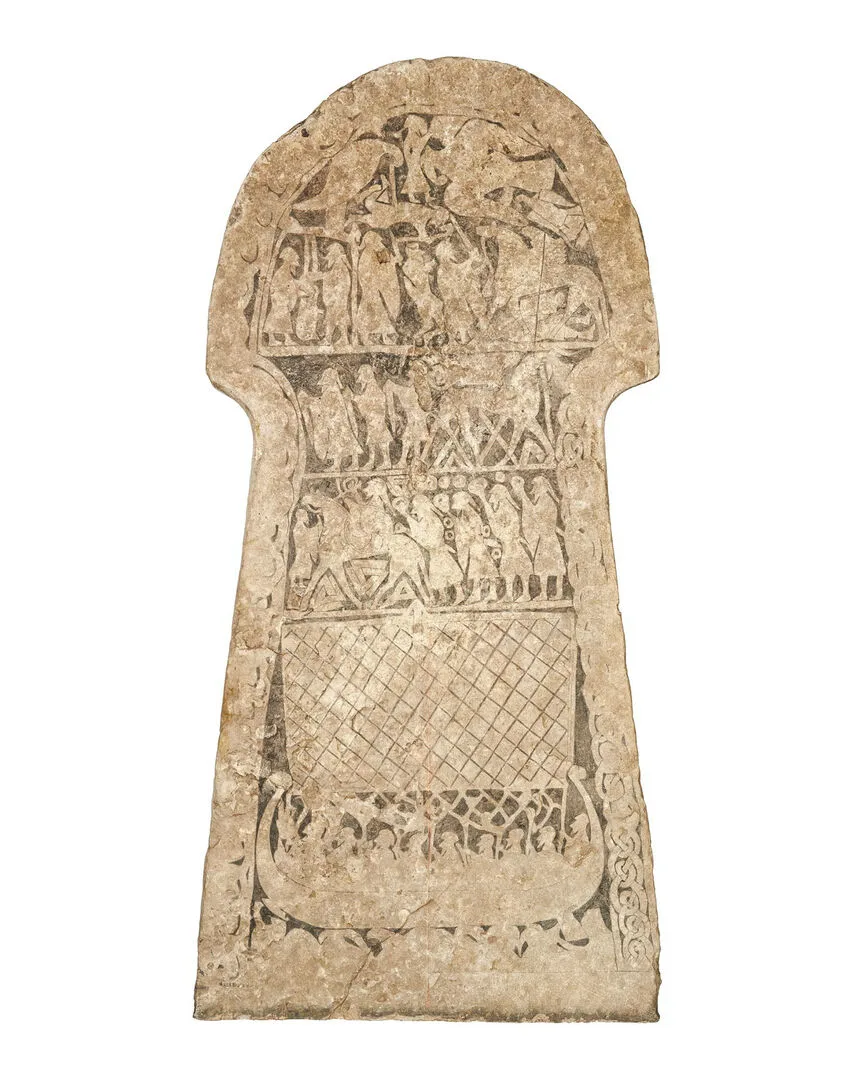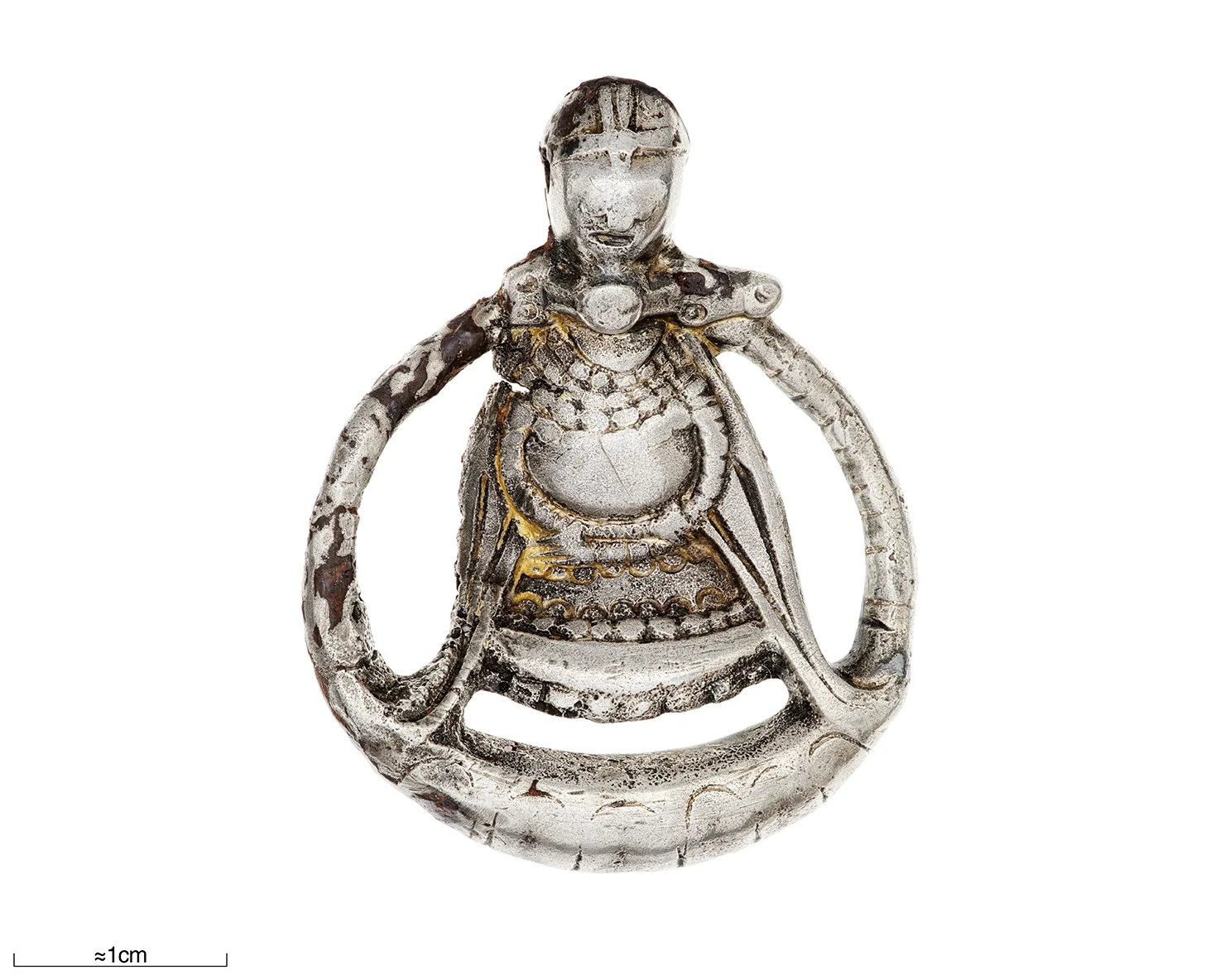Old Norse religion
Pre-Christian cult practice varied across what is now Sweden. Which gods were most popular shifted from place to place, as did the rituals connected with them. Viking Age death rituals have been studied by many scholars in recent years. It has been shown that burials could differ depending on the region. In the Mälardalen area, the dead were often burned on pyres (cremated) and small stone settings were raised over the funeral pyres.
In Finnveden, in the interior of Småland, cremation was also common, but here large earthen mounds were built over the remains of the pyre. To this day, hundreds of such burial mound fields lie hidden among the spruces of Småland. In most of Skåne, the dead were buried without cremation. Different regions had different traditions.

Burnt bones
Urn with burnt bones found in a grave at Tureberg, Uppland.
On view at Historiska museet in the exhibition Vikingarnas världFind this object in display 60, Vikingarnas värld Monter 60
Ceremonies could often be rather complex. It is not at all easy to cremate a human being, and it was common to build large monuments such as stone settings or earthen mounds.
The dead were in most cases buried with some of their belongings. Wealthy people might receive large sets of jewellery or weaponry in their graves - things that could be of use in the life to come.

Beads
Beads found in grave Bj 550, Birka.
On view at Historiska museet in the exhibition Vikingarnas världFind this object in display 18, Vikingarnas värld Monter 18
Traces of ritual at the cult house in Borg
The cult house at Borg in Östergötland stood on an important estate. It measured 6 by 7.5 metres, was built of timber and had a doorway facing west. The remains were excavated by archaeologists and dated to the late Viking Age.
Outside the building was a paved courtyard of about 1,000 square metres, where the most remarkable finds were discovered. Next to a stone outcrop 98 amulet rings were found. These were iron rings with small amulets in the form of axes and other shapes.
On the courtyard were also 75 kilos of animal bones. Among these were parts of pig skulls and large amounts of horse and dog bones. The bones are most likely the remains of sacrificed animals. Inside the house there were some large flat stones which may have formed the base of an altar.
Ceremonies and rituals were held in and around the cult house at Borg. Perhaps they were intended for the people of the wealthy estate, but most likely others from the district came there as well on special occasions. In recent years similar cult houses have been excavated at several aristocratic estates from the Iron Age. Sometimes they formed part of larger complexes together with great halls, enclosures and sacrifice sites.
Spears in the wetlands
Another remarkable site is the Gudings fields on Gotland. In the Viking Age, this was probably a wetland area where people sacrificed weapons of various kinds, mainly spearheads. In total, hundreds of spearheads from the ninth and tenth centuries have been found. Axes too were sacrificed here.
Offerings in bogs and wetlands occurred throughout the Iron Age. They were a form of communication with the gods. Perhaps people prayed for success in war, protection, or good harvests. Unlike the cult carried out on estates, these rituals took place in the open air.

Picture stone
From Tängelgårda, Gotland.
Viking Age religion in pictures
We can get an understanding of Viking Age rituals from the images they left behind. This picture stone from Tängelgårda on Gotland probably shows a warrior’s death, burial and arrival in the realm of the dead. In its four image panels, rather like a comic strip, are shown a battle with armed warriors, a funeral procession, the dead man’s triumphant entry into the realm of the dead, and a boat journey.
How the people look, how they are dressed, what they are doing, what the weapons and ships look like are all depicted in detail. Through archaeology, and through images such as those on the Tängelgårda stone, we can gain a sense of Viking Age cult and ritual.






